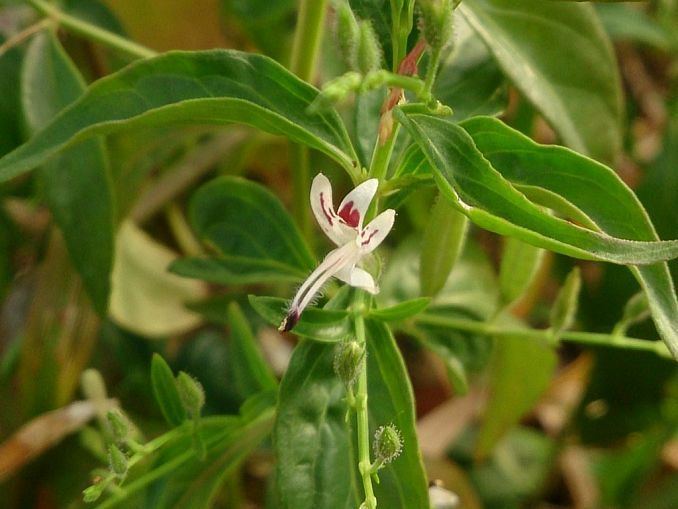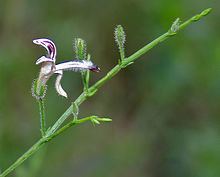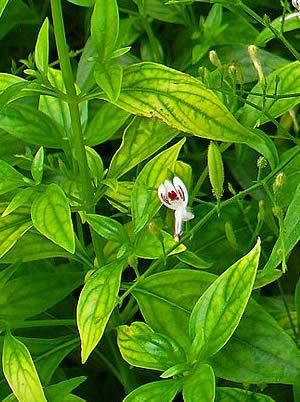Rank Species | Scientific name Andrographis paniculata Higher classification Andrographis | |
 | ||
Similar Heart‑leaved moonseed, Centella asiatica, Temulawak, Orthosiphon aristatus, Acanthaceae | ||
Herbal medicine andrographis paniculata natural remedy for liver disorders
Andrographis paniculata is an annual herbaceous plant in the family Acanthaceae, native to India and Sri Lanka.
Contents
- Herbal medicine andrographis paniculata natural remedy for liver disorders
- Common name for andrographis paniculata
- Etymology
- List of vernacular names of A paniculata Nees
- Description
- Distribution
- Cultivation
- Traditional medicine
- Medical use
- Chemistry
- References
It is widely cultivated in Southern and Southeastern Asia, where it has been traditionally used to treat infections and some diseases. Mostly the leaves and roots were used for medicinal purposes. The whole plant is also used in some cases.

Common name for andrographis paniculata
Etymology

Andrographis paniculata is an erect annual herb extremely bitter in taste in all parts of the plant body. The plant is known in north-eastern India as Maha-tikta, literally "king of bitters", and known by various vernacular names (see the table below). As an Ayurveda herb it is known as Kalmegh or Kalamegha, meaning "dark cloud". It is also known as Nila-Vembu, meaning "neem of the ground", since the plant, though being a small annual herb, has a similar strong bitter taste as that of the large Neem tree (Azadirachta indica). In Malaysia, it is known as Hempedu Bumi, which literally means 'bile of earth' since it is one of the most bitter plants that are used in traditional medicine.
List of vernacular names of A. paniculata Nees
Akean: Marean
Description

Andrographis paniculata grows erect to a height of 30–110 cm (12–43 in) in moist, shady places. The slender stem is dark green, squared in cross-section with longitudinal furrows and wings along the angles. The lance-shaped leaves have hairless blades measuring up to 8 cm (3.1 in) long by 2.5 cm (0.98 in). The small flowers are borne in spreading racemes. The fruit is a capsule around 2 cm (0.79 in) long and a few millimeters wide. It contains many yellow-brown seeds.
Distribution

A. paniculata is distributed in tropical Asian countries, often in isolated patches. It can be found in a variety of habitats, such as plains, hillsides, coastlines, and disturbed and cultivated areas such as roadsides, farms, and wastelands. Native populations of A. paniculata are spread throughout south India and Sri Lanka which perhaps represent the center of origin and diversity of the species. The herb is an introduced species in northern parts of India, Java, Malaysia, Indonesia, the West Indies, and elsewhere in the Americas. The species also occurs in Hong Kong, Thailand, Brunei, Singapore, and other parts of Asia where it may or may not be native. The plant is cultivated in many areas, as well.

Unlike other species of the genus, A. paniculata is of common occurrence in most places in India, including the plains and hilly areas up to 500 m (1,600 ft), which accounts for its wide use.

In India the major source of plant is procured from wild habitat.The plant is in Low Risk or Least Concerned in the IUCN category. Under the trade name Kalmegh Annually on an average 2,000–5,000 tonnes (2,200–5,500 tons) of plant is traded in India.
Cultivation

It does best in a sunny location. The seeds are sown during May and June (northern hemisphere). The seedlings are transplanted at a distance of 60 cm (24 in) x 30 cm (12 in).
Traditional medicine
Since ancient times, A. paniculata has been used in traditional Siddha and Ayurvedic systems of medicine as well as in tribal medicine in India.
According to the Mayo Clinic Book of Alternative Medicine, "A specific product (andrographis combined with Eleutherococcus senticosus) may shorten the duration and lessen the symptoms of common cold." It also says, "Pregnant women shouldn't use andrographis because it could terminate pregnancy."
Medical use
A review concluded that existing evidence from controlled clinical trials supports a role for A. paniculata in the treatment of symptoms of upper respiratory tract infections.
There is no evidence of its effectiveness in cancer treatment.
Chemistry
Andrographolide is the major constituent extracted from the leaves of the plant and is a bicyclic diterpenoid lactone. This bitter principle was isolated in pure form by Gorter (1911). Systematic studies on chemistry of A. paniculata have been carried out.
Some known constituents are:
